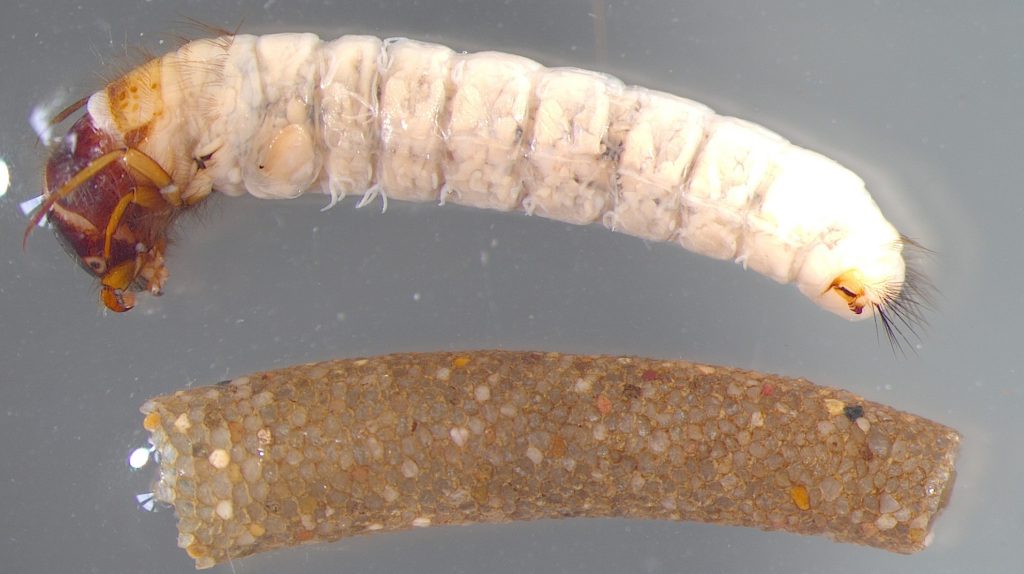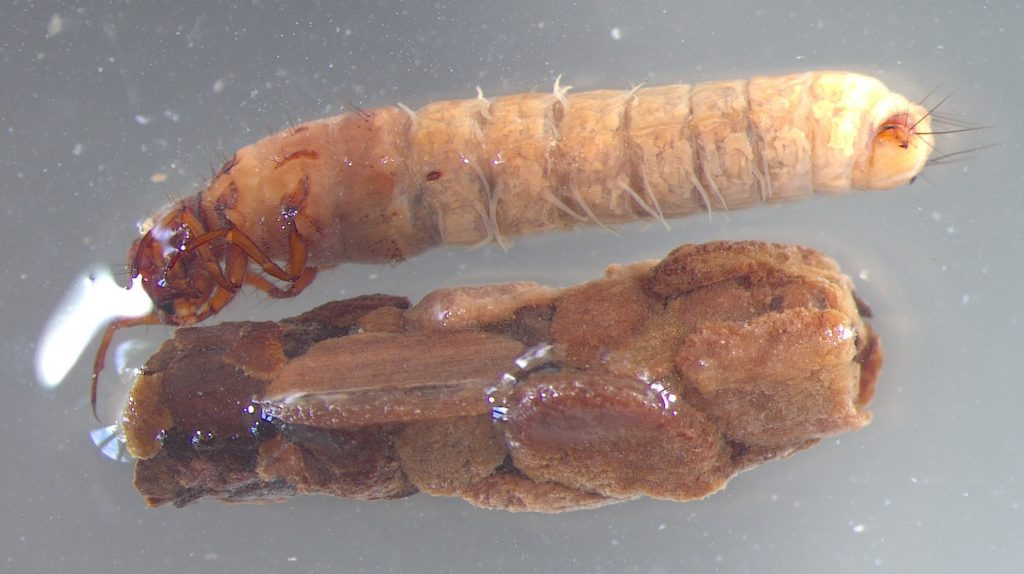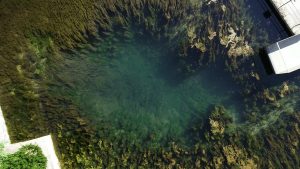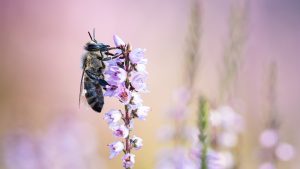The caddis fly
Caddis flies are insects and are one of the most individual and species-rich groups in our waters. In Central Europe alone there are 400 different species. The hairy wings are typical of their appearance, which they fold like a roof over their abdomen when they rest. The species in this group differ enormously in their size. Small species have wingspans of just 3.5 mm, while large species can have wingspans of more than 60 mm.
The adult animals live on land, but are bound to bodies of water to lay eggs. After mating, the female lays the eggs freely in the water or sticks them to plants or stones, usually under the surface of the water. After hatching, the larvae build a living hole, the so-called quiver, which gave the insect its name. The quiver is formed from small stones and other substrate with a spinning secretion and glued together. For some species, the shape of the quiver and the type of building material are extremely characteristic. The quiver offers the larva camouflage and protection from predators. In fact, there are also species that do not have a living hole and live freely at the bottom of the water. The larvae of most species feed on plant particles in the water. After a certain time they pupate inside their quiver. Before hatching, the chrysalis crawls to the bank. There the winged adult caddis fly frees itself from its chrysalis.
In general, caddis flies are an indicator of good water quality, as can be found in the upper reaches of the Senne streams.








